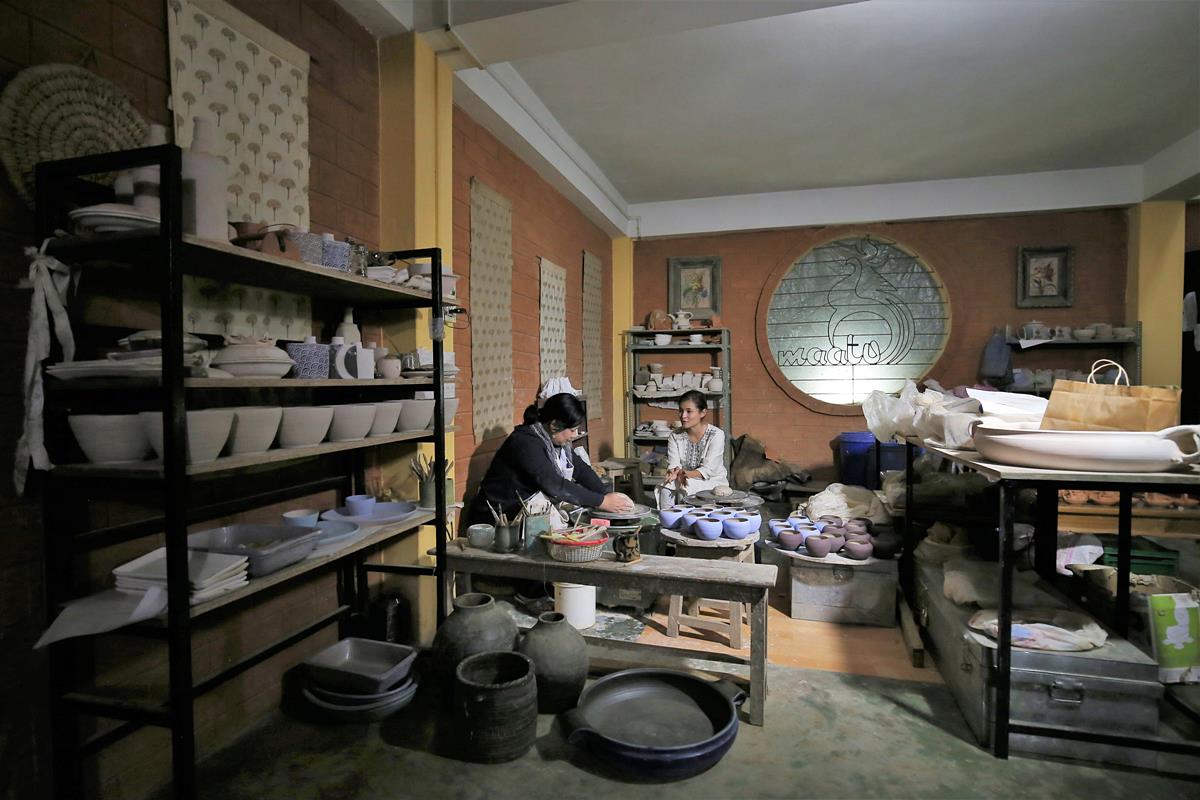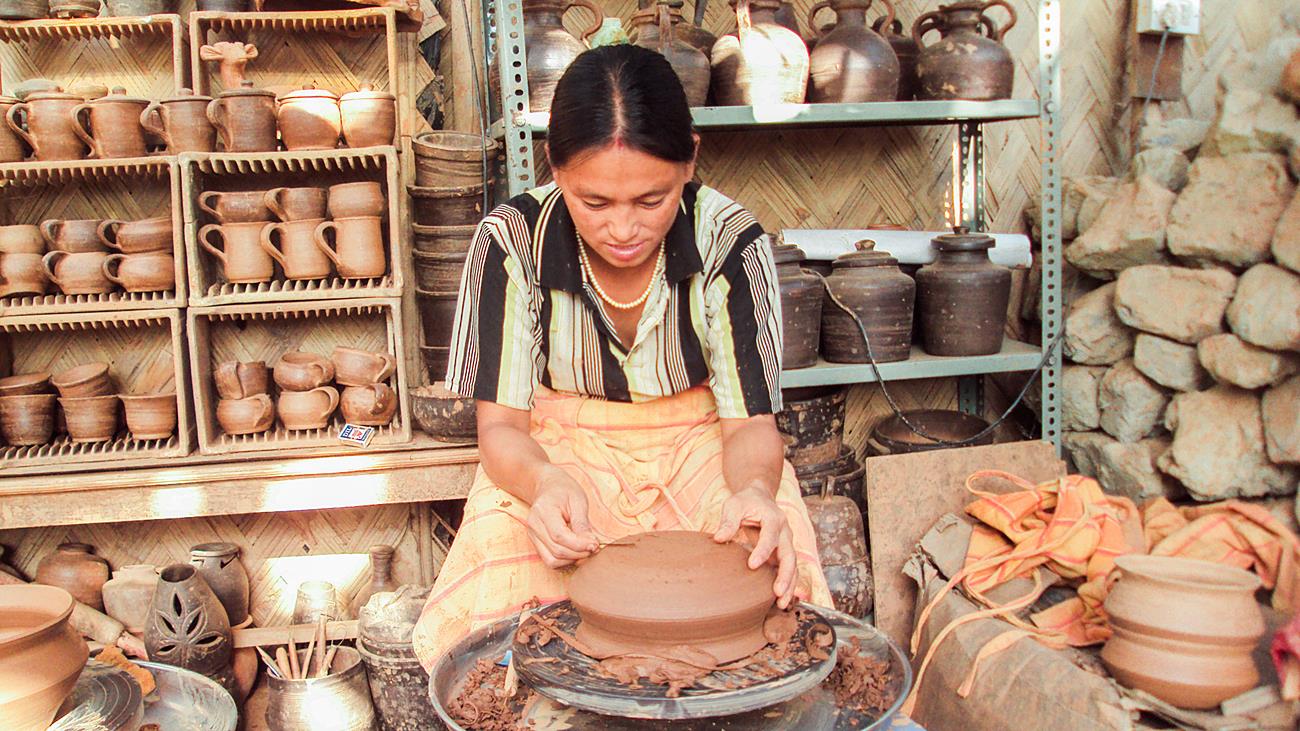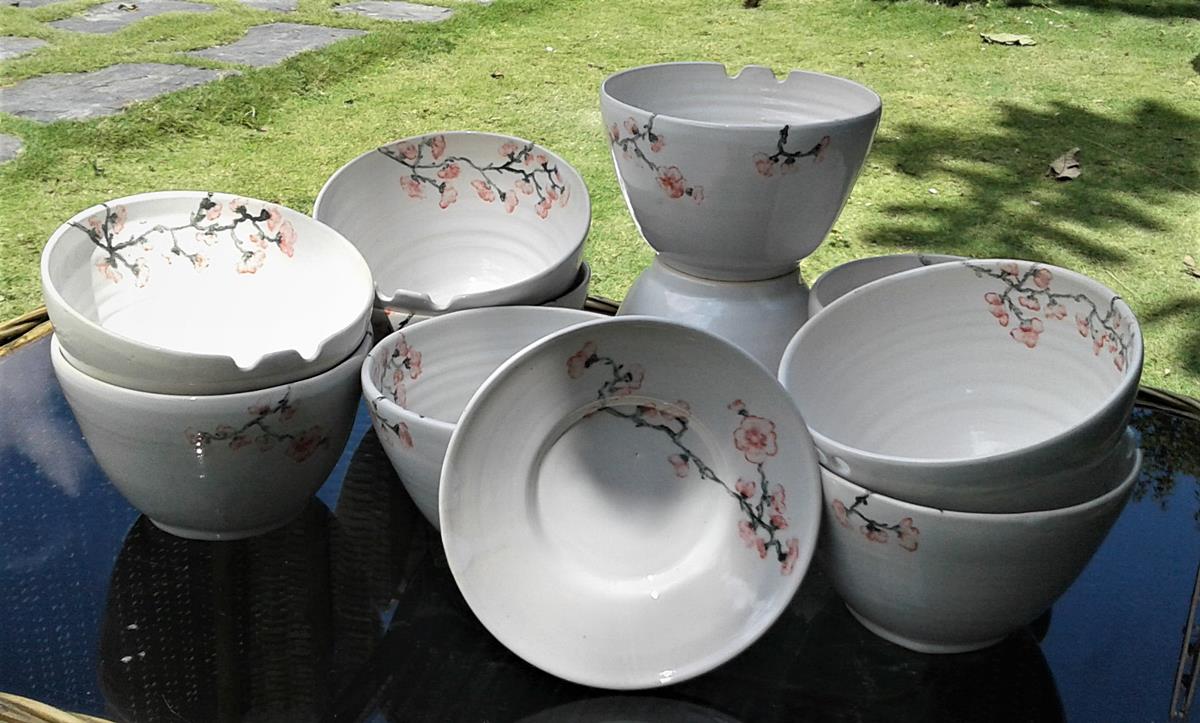Reena Rai’s pottery journey began a long time ago, even before she actually decided to give up her teaching job at Tashi Namgyal Academy to figure out what she wanted to do.
Reena was always interested in arts and crafts and doing things with her hands. When she was growing up, she would watch her grandmother crochet and knit. She was also interested in learning, but her grandmother would say, “Don’t learn this, it is a dukhia activity, drudgery filled and tedious.” But Reena would knit secretly, away from her grandmother’s gaze.
Once Reena completed her school, the next step was the big American Dream. Her aunt, a doctor, was already in America and she encouraged Reena to move there for further studies. But going to America opened Reena’s eyes to her own land. She believes that her generation was so influenced by satellite TV and the American programmes, that they thought that was the lifestyle they should all aspire for.

When people asked her about Sikkim, she realised that she did not know anything about it beyond the fact that it is in the Himalayas and is a land of orchids. It dawned upon her how little she knew about her own land. Moreover, being in America also sensitized her to her outsider status. Although she did take the university entrance exams, she wanted to return to Sikkim. Her aunt, too, had said on the very first day when she arrived in USA, “I am coming back.” She had lived there for thirty years! When Reena returned, her family was disappointed, especially since she had returned with a hazy intention to do something, to make a difference.
But this urge to return was prompted by an extraordinary experience that she encountered in America. Her aunt sometimes went to visit an Amish community as part of her medical duties, and Reena often accompanied her. The Amish community lived very simply and eschewed all forms of technology. Naturally, Reena grew curious about their ways. In the middle of technologically advanced USA, here was this community living a simple life without the trappings of modernity. The Amish farmed, engaged in craft, and worked with their hands. She found that theirs was a community untouched by contemporary developments. There was sharing and caring in the community.


When Reena gave up her teaching job in 2007, she still had to figure out what she wanted to do. She had always been interested in pottery and was constantly looking for opportunities to learn the skills. She did not want to go to studio training setups in Delhi, or elsewhere, for she believed that they would take up pottery as a hobby, not professionally. She was looking for an immersive experience. She wanted to live in a potter’s village where they had been practicing pottery for generations. She was fortunate to find such a village through the Khadi CEO in Sikkim. A friend had mentioned to Reena that the friend had undergone a training in handmade paper-making through Khadi. The CEO informed her that there was a Khadi institute in Khanapur, on the borders of Karnataka, Goa and Maharashtra in the Western Ghats. She was given fifteen days to get to the institute.
Her teacher admonished her, “Why are you afraid of clay? The clay should be afraid of you!”
Khanapur is a traditional potter’s village where the families have been practicing pottery-making for generations, and their deep understanding of the clay combined with their hands-on feel of the clay was unique. The infrastructure at Khanapur was basic, almost non-existent, and yet it was the most enriching education, because the teachers were dedicated and highly skilled. Her most important lesson was that she did not need fancy tools to learn a new craft. At first, she was timid in her approach to clay. Her teacher admonished her, “Why are you afraid of clay? The clay should be afraid of you!”
After three months of practice, she realized that she needed to go to the next stage—the glazing process. She was just three hours away from Goa. In her earlier visits to Goa, she had found that it had a rich ceramic tile tradition that was greatly influenced by the Portuguese art of tile making and painting. She moved to Goa to learn about this and spent three months there. In 2008, she returned to Sikkim to begin the life of a potter.

The very attractive soil of Kitam in South Sikkim is bright red, rich in iron and mixed with silica which gives it a bright sheen. But to her dismay it had very little plasticity.
Establishing her company, ‘Maato’, took time. There was plenty of paperwork, filling of application forms for registration and getting a loan from the government to start her work. She was chasing a dream of training village women and giving them skills that would lead to financial self-reliance. She began with a six-months training course for women. It took a lot of convincing for the men of the family to allow their wives and daughters to undergo this training. It was not easy with the women either. Living in the village they had social commitments where marriages and funerals demanded their participation. Some just dropped out.
Meanwhile, there was much learning to be done. The very attractive soil of Kitam in South Sikkim is bright red, rich in iron and mixed with silica which gives it a bright sheen. But to her dismay it had very little plasticity. She had to import Ganga silt/soil from Bihar and mix it with the Kitam soil to achieve the crucial plasticity required for molding the products and for strength to withstand the firing process. It took about four to five years of trial and error to get the proportions right. By 2011, she was able to move from a rented premises below Kitam Bazaar to her own premises that was built with the rammed-earth eco-friendly bricks that were manufactured by her using the red earth of Kitam.
In 2009 ‘Maato’ took a stall at Namchi Mahotsav, and later participated in the Maghay Mela in Jorethang. Her intention was to raise awareness and interest in pottery. People were astonished to learn that the products were made from local Sikkim soil, and were full of questions about the process.

Ten years later Reena realised that Namchi did not have the infrastructure—not even a reliable courier service to run a business. She managed to get orders online, but was unable to meet the orders because of the lack of packaging and transport facilities. She and her husband built a studio in Pakyong which is the native place of her husband. Moreover, with the new airport, she hoped sending her products would be easier, and with its proximity to Gangtok, tourists would find it more convenient to visit her studio.
Still, the biggest challenge was finding trained and reliable manpower. Women are not attracted to the messy process of working with clay and mud. They prefer working in hotels, beauty parlours, or as air hostesses. Reena looks out for machinery to make up for the shortfall of manpower.
Her products are mostly functional, though some are decorative and some art installations. For household items she tries to keep the costs reasonable. She wants her products to go to each home in Sikkim and she wants her customers to come back for more. She makes utility items such as candle stands, incense holders and mosquito coil burners. They are cheap and useful and people do come back for more. Keeping in tune with the times she has created table ware with white clay which are fired at high temperature and can withstand the home microwave.
Taking a cue from Goa, she also paints tiles with what she considers Sikkim’s cultural scene and heritage for decorations and souvenirs.
The journey is not finished yet. There is much to do and to create still.
Photo Gallery
(Click to enlarge)








Ma'am I really appreciate that you are following the generation of our ancestors... In this kind of generation you are exist. You influenced me I also want to do something in my life. I never learn this but I want to learn from you and want to do something in my life .. i influenced by you
Hello,
I am very inspired from your story, I would like to visit you, also get a chance for volunteer and work with your community.
I have profound interest in pottery since childhood.
I am movement artist, sound healer and creative direction person.
Please let me know how can I be helpful.
Aria
Well written the project Sikkim.
I love every bit of these stories unveiling, which we never could have known on our own.
And this is such an inspirational story. As a person very fond of art , I’ve always imagined myself learning pottery and creating something of my own.
Will visit her in the future for sure.
Congratulations Reena. You are truly an inspiration to many. The show must go on......
Congratulation to Reena for her grit and determination to be self enterprising. She is a rare breed among the Sikkimese people